Reported positive ‘cases’ have been increasing slightly in the U.K. recently, though the trend appears to be flattening.
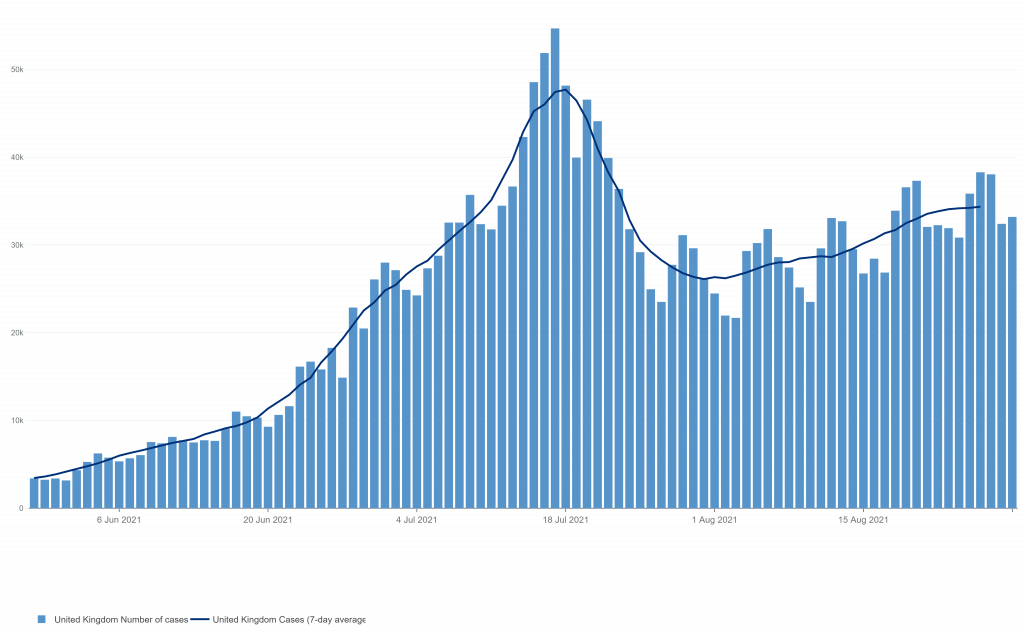
Interestingly, the rise has been concentrated outside England, which has been declining in the last week or so.
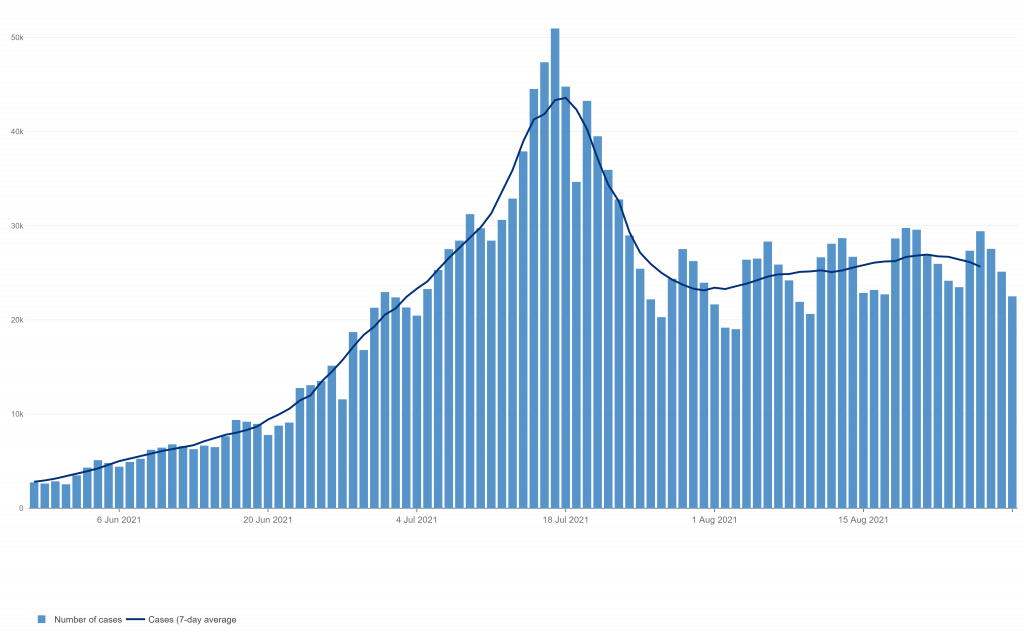
Scotland has seen the most striking rise, linked it appears to the return of children to school on August 18th.

The Scottish surge in ‘cases’ is linked to a surge in testing – it seems that parents have not been testing their children over the summer, and the requirement to do so for school has picked up a load of hidden infections (presumably these children and their families have not been isolating over the summer either).

This initially caused a spike in the test positive rate as well. However, as noted by Anthony Brookes (Professor of Genomics and Health Data Science at the University of Leicester, who produced these graphs), the positive rate has been declining for the past week.

It’s instructive to break down the recent trends in England by age. Trends in different ages were very similar until July 28th, at which point they diverged. The 20-40 age group abruptly started rising again, though then peaked again on August 9th and has been declining since. The under-20s slowed to a plateau, spiked from August 14th, peaked again on August 22nd and have been declining since. The over-40s on the other hand started rising again on August 2nd and are still going, despite being the age groups with the highest vaccination rates.
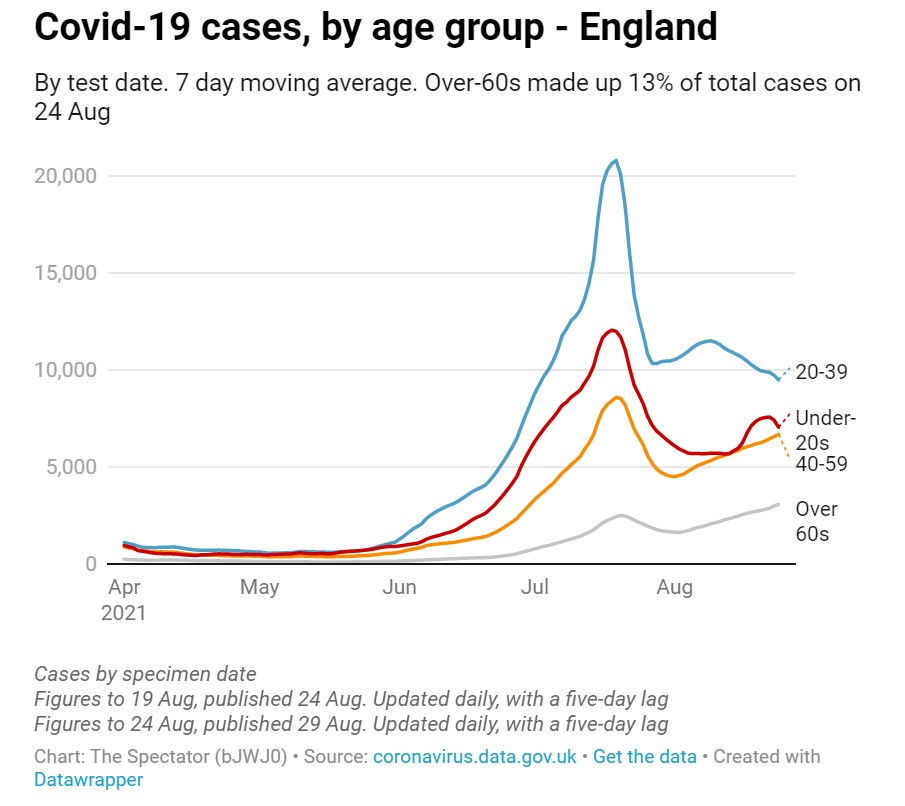
Worryingly, this rise in reported infections in the over-40s coincides with a rise in the proportion of Covid hospital admissions in the over-65s. The drop in the proportion of older people being admitted to hospital had been one of the key real-world indicators of the vaccines preventing serious disease, so to see this going up again raises questions of whether vaccine effectiveness against serious disease is declining.
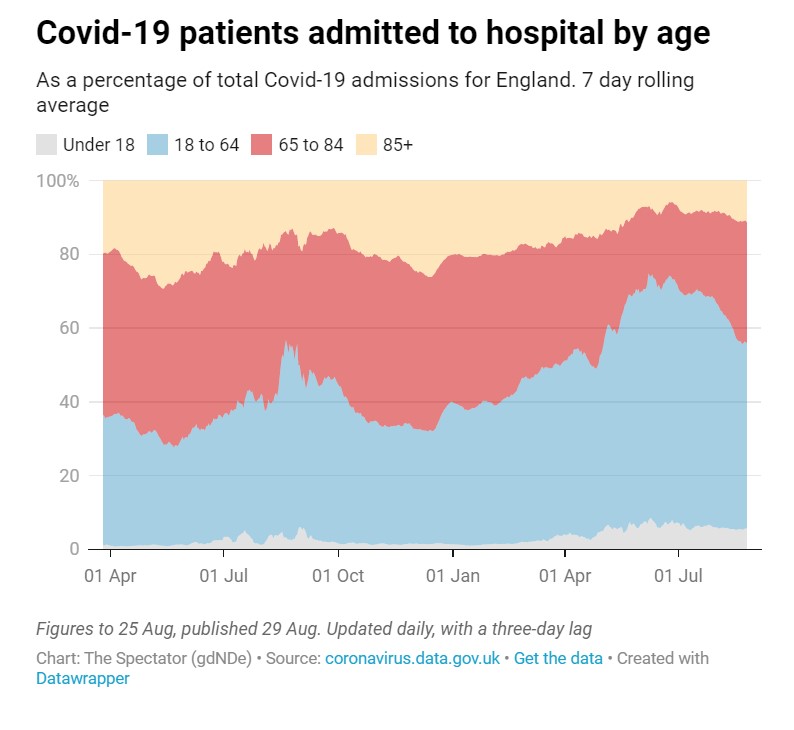
Data from the Israeli Government has suggested that vaccine effectiveness against serious disease in the over-65s has declined to around 55% in six months, which is one reason they are now rolling out boosters.

In the U.S., President Biden and Dr Anthony Fauci have mooted the possibility of boosters as often as every five months. If people are receiving these injections twice a year every year that significantly changes the risk-benefit calculation. A new analysis by TrialSite News of VAERS data finds that almost 100 times more deaths are reported in connection with Covid vaccines than with flu vaccines, and that the variations across different categories indicate the increase is not a result of stimulated reporting.
Meanwhile, American states continue to demonstrate that Delta outbreaks stop growing and decline without any interventions.

Florida’s reported infections have plateaued at a high level rather than declined so far – though it appears this is a result of increased testing. The positive rate dropped sharply last week, suggesting an epidemic in decline.
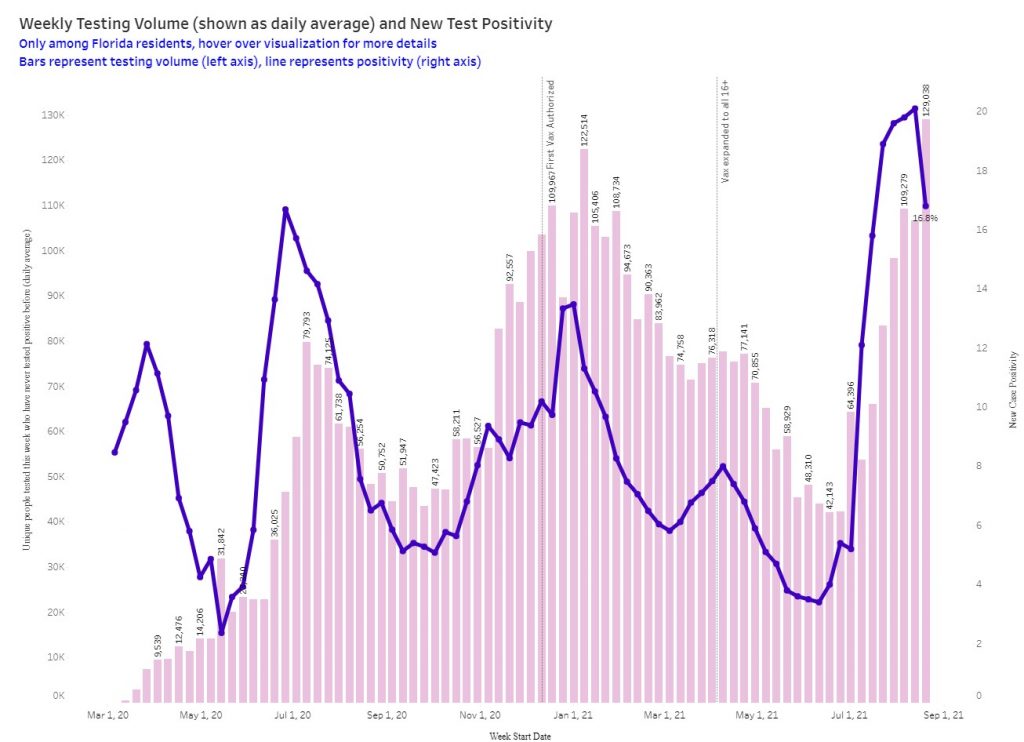
Vaccines may help to prevent serious disease and death in high risk groups, though it’s not clear how long this protection will last and thus how the risk-benefit stacks up over time. But in the end what will bring this pandemic (if such it still is) to an end will be old-fashioned herd immunity, built up via infection and robust against the various variants that appear over a number of seasons. In the meantime, the extraordinary measures taken to counter the spread of the disease have shown themselves ineffective or, worse, an impediment to the development of this durable herd immunity.












To join in with the discussion please make a donation to The Daily Sceptic.
Profanity and abuse will be removed and may lead to a permanent ban.
We make our own so Tesco can jog on
Thanks for the suggestion – will try it.
Mrs ToF does one with beetroot too
Tahini also goes well on toast
Kudos. Nothing beats homemade hummus, taramasalata and salsa dips, stored in re-usable pots, preferably glass!
Please share your recipe, our efforts have always been subpar.
Yeo Valley, whose Yoghurt I eat a lot of, did away with their lids a year or so ago. I saved a few before the axe fell, I’m now down to the last one. Sad days.
1 tin of chickpeas, drained. Pinch of salt. 2 tablespoons of tahini paste. Juice of 1 small lemon. 3 tablespoons of olive oil (add more later if comes out too thick). Put it all in a food processor and blend to a paste. Sprinkle paprika on top before serving. Beetroot version – same recipe but add a small cooked beetroot. Bon appetit!
Forgot to add two small cloves of garlic
We buy this sort of thing for picnics; there’s always some left to take home. Without something more robust to cover them the pots can’t be stacked in the fridge or in the cooler bag. We’d probably end up binning what’s not used.
As for ‘consume within 2 days of opening’… Well let’s put it this way: I ignore that and I’m not dead yet.
Horrible stuff.
More likely cost-cutting you will see cheaper packaging in all shops from now on. If you start being that tight-arsed you’re going to put people off shopping with you. And also people will rightly ask, if they are cutting costs to the bone like this then what else seen or uinseen are they doing. Of course it is happening with processed foods where the ingrdients were already dirt cheap and barely legal and have now degraded further. We shouldn’t have to do things like this in this country.
I know a Chinese Restaurant like that, getting the out of date stuff to cut costs.
No it’s not cost-cutting! It’s increasing cost: a hidden cost for consumers.
All the reduced plastic/plastic free nonsense incurs a cost for retooling machines, redesigning and restructuring the production line and how these items are handled, packaged and stored.
Replacing plastic packaging with other materials is a process of trial and error and stability and safety testing to guarantee shelf-life.
All this cost is passed on to consumers.
On another topic, I read two articles yesterday about the comments about Englishness made by Jenrick. One was a DS article, the other was by Mark Steyn. They both made the point that he couldn’t even define Englishness, and yet, that didn’t stop some rabid lefty towards the end of Patrick’s show on GB News from calling him a racist FFS.
Waitrose do the same with their taramasalata.
It just makes me finish it off the following day.
Problem solved.
Robust containers. Build quality. No diminution in the quality of ingredients. If you can’t vouchsafe those things then disappear into the sewer where you rightfully belong. This is your long drawn out retreat into the shadows. Don’t try and drag the rest of us with you. You will just meet your demise sooner than expected.
Don’t be naive around these people because they will continue to fleece you until you lose your naivete. I know it is difficult if you are a respectable decent person that just wants to behave appropriately but you have to be aware of the scam lest your ignorance makes it worse.
LIDL still do plastic pots with lids, on all flavours of houmous / hummus. Stir in a couple of tablespoonfuls of extra-virgin olive oil and it’s almost comparable with the Sabra brand.
On the fixed lids: Cut them off with scissors. Collect them. Take them to the supermarket and deposit them discreetly where the offending plastic bottles are.
No-one mentions a tiny glitch in this wizard eco-genius scheme.
Proper pots with proper lids with a proper seal are reasonably effective in protecting us against the homicidal blackmailing chaps.
There used to be news cases where thousands of stores withdrew (and mostly destroyed) millions of items because of ransom threats.
I guess the modern way is to just let the plebs die, happy that our Beloved Leaders don’t buy stuff from supermarkets, anyway.
You are quite correct. Clip-on lids are designed to be “tamper-evident”. With only a film cover, it is easy enough to use a hypodermic needle to introduce foreign material into a product which will not be evident.
Someone with a pin, or just breaking the seal between film and rim, can sabotage shelf stock which will quickly spoil when air and moulds get in.
I expect it won’t be long before this starts happening – plenty of loonies out there – and the mindless executives in supermarkets will learn an expensive lesson – or their shareholders will.
Several year ago I bought a bag of assorted washable food protectors, They are polythene discs of assorted sizes with elastic aruond the periphery, a bit like plastic hairnets. They are washable and reusable and have lasted well. Cling film is a thing ot the past for me.
Went into John Lewis yesterday with the CEO to buy some bed linen all of which were on display WITHOUT any protective coverings . Dread to think how long it will be before they start having to reduce their prices or jettison said products through soiling whilst on display. The stupidity knows no bounds.
The demonisation of plastic, another article of non-evidence based belief in the Church Environmentalism.
A number of products have lost their clip-on lids over the last year if so. Sainsbury no longer provides little plastic or even paper bags in their loose veg section.
Birds Eye have removed the grip-lock closure on their bags of frozen veg.
Who exactly is important, consumers or Ecofascists and fish in the sea?
Boycott.